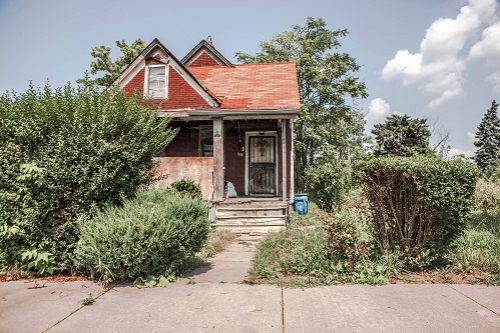What kind of insurance do historic homes need?
On the surface, historic homes need the same type of insurance as any other house; you need coverage for the dwelling itself, any other structures on the property, your personal property and liability.
However, historic homes can be difficult to value, and because of their age and specialty construction characteristics, they may not always qualify for a standard policy.
“The reason for the different policy is to ensure the historic home will be restored to its original condition following a claim. Most historic homes have building materials and other historical features that can not be replaced with standard construction materials like today's new construction homes are built with,” says Lauren McKenzie, licensed broker with A-Plus Insurance in Sierra Vista, Arizona.
If that’s the case, historic homeowners can look to other options, like a high-value home policy or an HO-8, which is designed for homes that don’t meet the standard requirements. Let’s look at a breakdown of the options for insuring an older home with historic features.
Read more on homeowners insurance for various types of homes.
Finding insurance policies for historic homes
There are several options for insuring an older home, and the best homeowners insurance for historic homes depends on your home’s age and specifics about the house, like rare features, size and how updated (or not) the wiring and plumbing are.
HO-3 or HO-5 policies for historic homes
If your home qualifies, you may be able to get a traditional homeowners insurance policy. An HO-3 is the most common type of policy and includes all of the basics. To ensure enough coverage for the house, you should look for an extended replacement cost or guaranteed replacement cost policy.
If you have a home that’s higher in value and has high-value contents and you’re looking for coverage that’s a little better than the standard, consider an HO-5 policy, which offers replacement cost coverage for both the home and its contents in the standard policy.
HO-8 historic homeowners insurance
Homes that don’t qualify for an HO-3 or HO-5 due to age, outdated materials or other issues can often be insured with an HO-8 policy, which has less stringent requirements. An important distinction here is that HO-8 policies are actual cash value; they don’t pay the replacement cost of the home. If there’s a claim the policy will consider depreciation in the payout.
High-value home insurance
Some companies offer a specialty policy for high-value homes; the insurance company will work with you to value your home and make sure that you are getting the coverage you need. In most cases, high-value home policies start at $1 million in dwelling coverage, so they’re not for the average older home.
Where can you buy historic home insurance?
Most insurance companies offer HO-3 and HO-5 policies, but if your home doesn’t qualify, you might need assistance finding a home insurance company for your older home.
National Trust Insurance Services (NTIS) helps owners of historic homes to find the insurance they need. It’s an agency that works to place hard-to-insure homes with companies that will write a comprehensive policy.
If you’re looking for homeowners insurance for homes over 100 years old or for a home with a lot of special features, NTIS might be your best bet.
If you have a high-value historic home, you can start your search with specialty companies. Chubb home insurance is known for providing coverage to special houses including high-value older homes. AIG is another big name in high-value home insurance.
How much is historic home insurance?
The cost of insuring an older or historic home depends largely on the type of property, the age, special construction features and where the home is located.
In general, you can expect to pay more to insure your historic home. That’s because they are more costly to repair and are often a higher risk due to outdated wiring, plumbing or other construction features.
To get the best price on historic home insurance, shop around. Working with an agent who specializes in this type of home insurance can make the process easier.
What makes a home historic?
To be officially designated as historic, a home has to be more than just old. The National Register of Historic Places provides a list of criteria, but the main three are age, integrity and significance.
In general historic homes are at least 50 years old. They should maintain historical integrity; this means they look much as they did when they were built.
The third requirement, significance, can have several meanings. It can be a structural or engineering achievement, be architecturally notable or have been associated with events or people of historical importance, to name a few examples.
When it comes to insurance, whether or not the home is listed by the National Register doesn’t much affect qualifying for coverage. Insurance companies are more concerned with the risk associated with the home. You may need to put a little more time into finding the right insurance for your home, but it will be worthwhile to protect it properly.
Sources:
- National Register of Historic Places. "How to List a Property" Accesses June 2023






